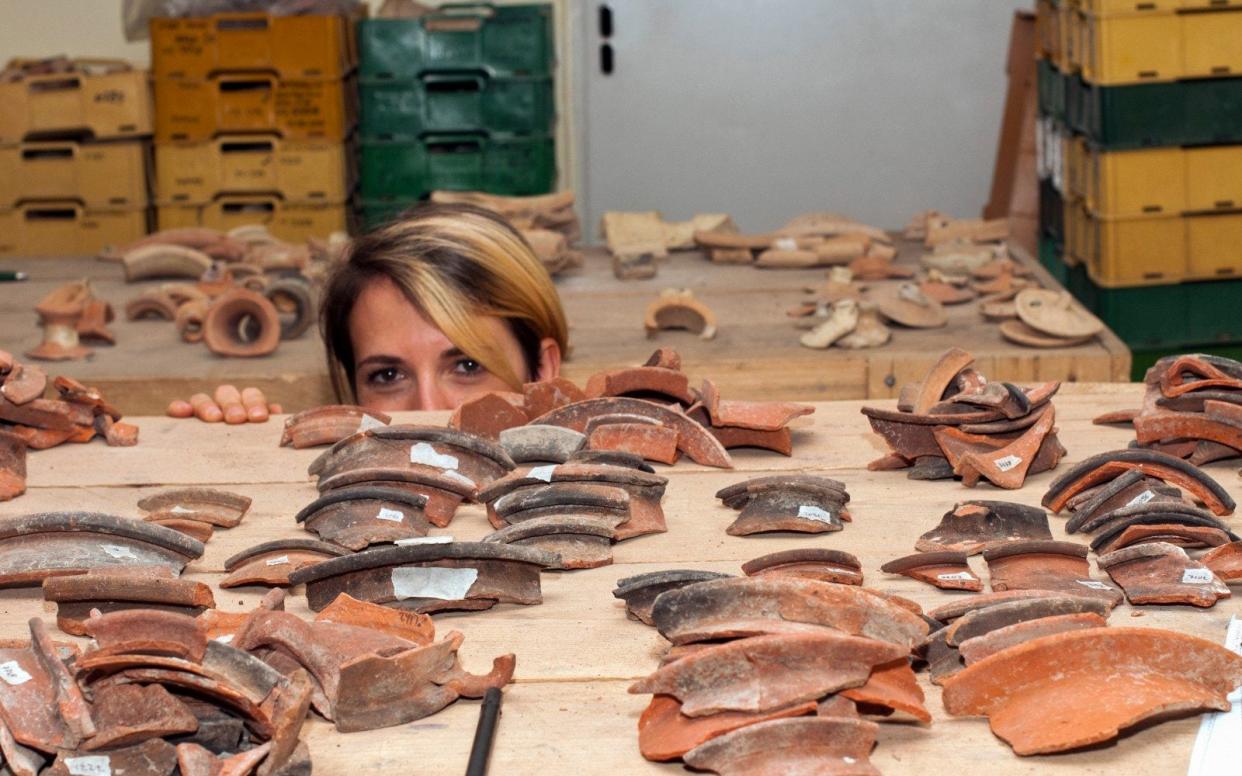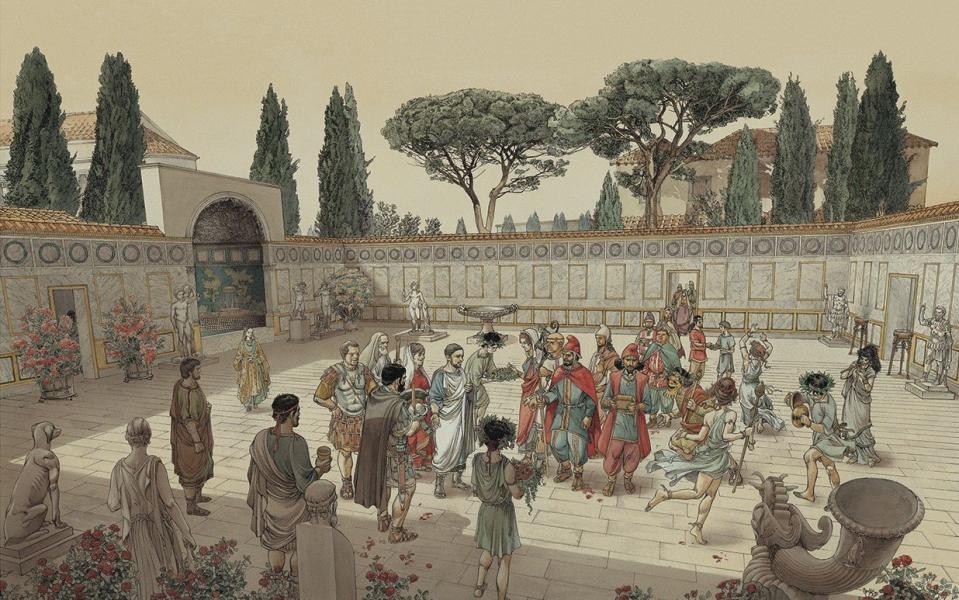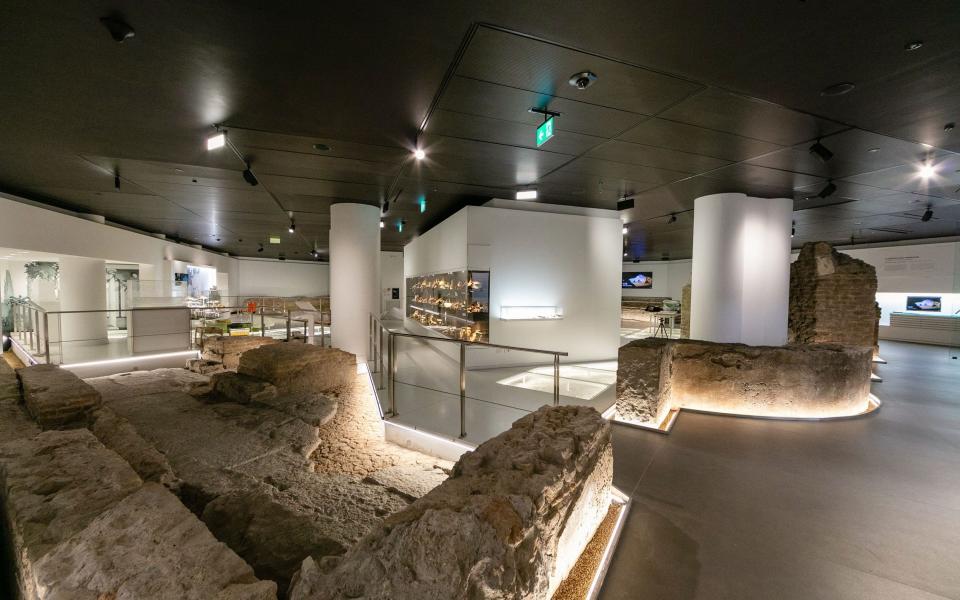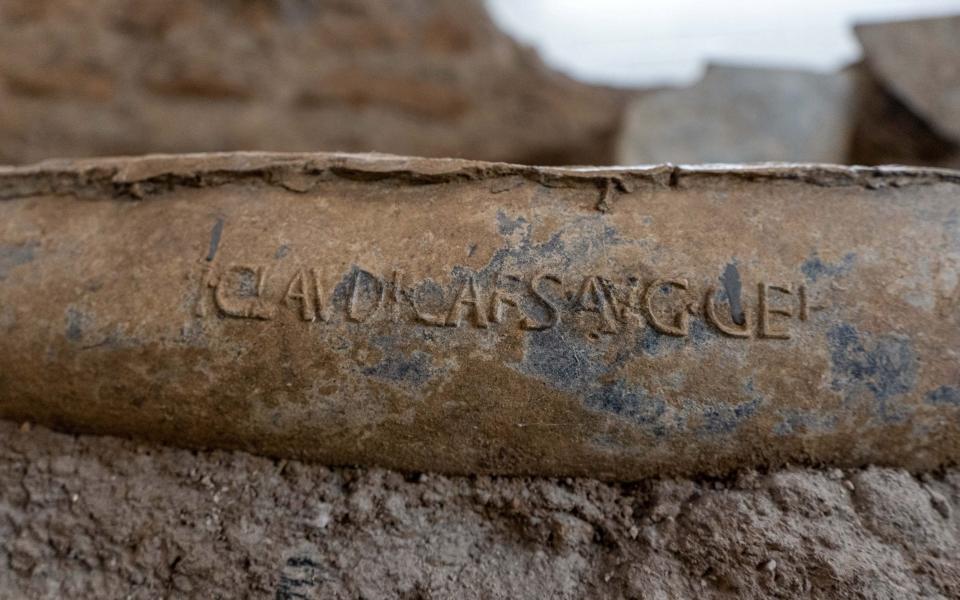Ancient Rome’s ‘pleasure palace’, where Caligula got his kicks, to open to the public

- Oops!Something went wrong.Please try again later.
For Rome’s emperors, it was an earthly paradise, a lavish complex of villas, gardens and fountains where they displayed a menagerie of exotic creatures such as lions, bears and ostriches.
Known as “the garden of the gods”, the remains of an imperial pleasure palace where the likes of Caligula and Claudius were once entertained by dancing girls and musicians have now been turned into Italy’s newest museum.
The archaeological treasure trove was found, incongruously, beneath an office block in the heart of Rome during building work.
Due to open to the public on November 6, it is packed full of gems, from exquisite glassware to pen knives, bronze ink wells, fishing hooks, an ivory doll’s leg and brass pendants from a cavalry officer’s harness.

Archaeologists discovered 100,000 fragments and objects from the Roman world, including the tooth of a brown bear and the bones of African lions and ostriches, testimony to the bestiary that the emperors kept for the delight of visitors and to show off their own power and wealth.
“Animals like deer and ostriches would have been allowed to wander freely around the gardens but lions, bears and other ferocious creatures would have been caged. It would have been like a small zoo,” said Giorgia Leoni, one of the archaeologists who excavated the site.
“We think the bears and lions would have been used in gladiatorial shows, private versions of the bigger contests that were staged nearby in the Colosseum. This complex covered a very extensive area. It was like a slice of countryside in the city.”
The Roman remains came to light during work carried out beneath the headquarters of an association that provides insurance for Italy’s doctors and dentists.

The villa and garden complex was built on the Esquiline Hill, one of the famous Seven Hills of Rome.
It was originally constructed in the first century AD by a wealthy aristocrat, who bequeathed it to Emperor Tiberius.
From there, it passed down to a succession of emperors, including Claudius and Caligula.
Caligula, who has a reputation as being one of Rome’s most eccentric if not psychopathic emperors, was so enamoured of the retreat that when a delegation of Jewish merchants from Alexandria in Egypt came to put their grievances to him, they could hardly get a word in.
The emperor spent the whole time directing improvements and upgrades to the gardens and pavilions, classical sources record.
He had windows made of glass installed – a rarity at the time, even for an emperor.
“Chemically, transparent glass was very hard to make,” said Claudio Borgognoni, an archaeologist. “The masters of the art were from Syria.”

When Caligula was assassinated in AD 41, his sisters had his body brought to the imperial estate.
It was burned because they feared that otherwise it would be desecrated if it fell into the hands of angry Romans, who hated the emperor for his tyrannical rule.
One of the most notorious of all emperors, Caligula is said to have had an incestuous relationship with his sister, to have dressed up in women’s clothes and to have proclaimed himself a living god.
The underground museum is centred on the remains of a courtyard where the emperor would have relaxed.
Nearby is a marble staircase which would have led to gardens of fruit trees, fountains and shaded pavilions known as nymphaeum. The latter have given the museum its name, the Museo Ninfeo or Nymphaeum Museum.

Archaeologists found 2,000-year-old pollen and seeds from exotic plants that came from Asia Minor and Egypt.
The remains of food attest to the opulent feasts that the emperor and his entourage would have enjoyed. During the excavation, experts found oyster shells as well as the bones of gilt-head bream, dusky grouper, tuna and cuttlefish.
Favourite dishes of the Roman upper class included oyster pie, sea urchins, wild boar steaks, roasted warblers and thrushes with asparagus.
There are also religious artefacts, including a terracotta pot depicting the ancient Egyptian divinity Bes, a creature with the head of a man and the body of a lion.
“It would have been an extraordinary place,” said Daniela Porro, a senior archaeological official with the city of Rome.
“The gardens would have been full of statues, mosaics, frescoes and marble from all over the empire.”
It may have been a tranquil sylvan retreat, but it was also very handily located. “In 10 minutes, the emperor could get by carriage to the Palatine Hill and the Forum, the centre of power in Rome,” said Mirella Serlorenzi, the scientific director of the project.

